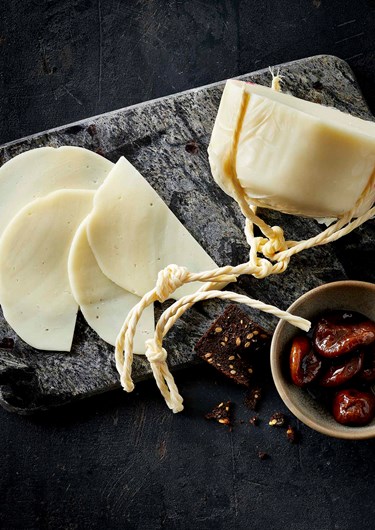
Provolone
What is Provolone?
Provolone is the fruit of devoted artisanship and total dedication to a single craft. Spun from stretched curd and initially too soft to place on shelves, this semi-hard cheese is known to take on a wide range of shapes and sizes. Opening with hints of nuts and salty undertones, it is smooth, mild and full of character.
Influenced by both ends of the country, Provolone has found its home in the regions of Val Padana in northern Italy. Friesian cows that graze near the Po river supply fresh milk to the creameries and are key to the development of the velvety and rich taste of the Provolone.
Enjoy melted or cold, Provolone provides apt flavours and textures throughout its uses.
How Provolone is made
The process of making a batch of Provolone demands care and skill in all aspects of production.
Milk brought directly from the polder is enriched with natural whey and rennet in order to form the curd. The use of local ingredients creates the characteristic flavours, unique to the Val Padana region. After resting, the curd is cut and separated twice, followed by a draining of excess whey. In a process that resembles juggling, skilled workers then weave and shape the uncured cheese into tightly woven rondures, eliminating any remaining air bubbles and producing an even and flawless texture. Brined and then cooled, the cheese is hung in strings to rest and mature. Aged for a period of at least 2 months, the Provolone is ready for the shops.
Like most Italian cheeses, Provolone has simple ingredients but a rich taste. Most versions are pasteurised and gluten-free, without any added fillers or preservatives. Traditional Provolone is unsuitable for vegetarians, due to the addition of calf rennet. Be sure to always check the label.
*Castello UK does not produce or sell Provolone at the moment, let us know if you would like to try this Castello cheese by leaving us a message.
Curious about the world of cheese? Here's everything you need to know about how to store, serve and cut cheese!

Discover our cheeses
A world of surprising and indulgent sensations









